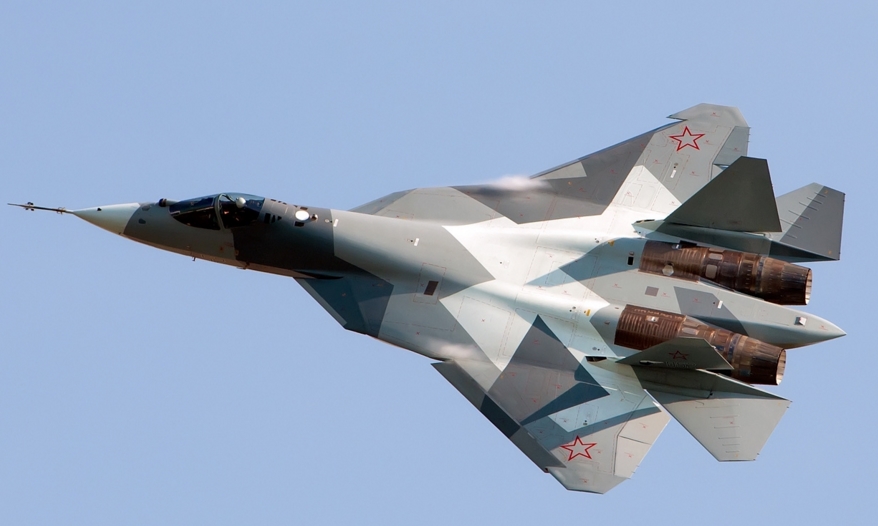U.S. Central Command says it does not track Russian military activities, even those that occur inside CENTCOM’s region
06/13/2016 / By usafeaturesmedia

(NationalSecurity.news) U.S. Central Command does not track Russian military activities in and around Syria — even those that occur within the CENTCOM area of responsibility, a spokesperson from the command told AMI Newswire.
The comment was made in response to this journalist’s query about the reported sighting on Sunday of a Russian Tupolev-142 Bear aircraft in the skies above rebel-held territory in Syria. If true, this would be the first known presence of the long-range aircraft in Syria.
The four-engine plane, based off the Soviet-built Tu-95 bomber, was originally designed as an anti-submarine aircraft. The plane purportedly seen Sunday, however, appeared to be a Tu-142M “Bear F” model, equipped with high-tech sensor packages. If so, the plane could be used for surveillance and reconnaissance, in order to locate targets on the ground.
The sighting of the four-engine aircraft was reported Sunday in The Aviationist magazine. The digital publication posted a video reportedly filmed June 5 in Idlib, in northwest Syria near Aleppo, showing the Bear overhead.
In an effort to confirm the report of the Tu-142, AMI Newswire contacted U.S. Central Command, which has Syria as an area of responsibility.
“USCENTCOM does not track Russian military activities,” responded Air Force Capt. Michele Rollins in an email. “You would need to contact Russia specifically with those questions.”
The question of U.S.-Russian coordination in Syria arose March 30 at MacDill Air Force Base in Florida, where AMI Newswire attended a gathering between high ranking U.S. defense chiefs and a small number of journalists. The gathering was held in conjunction with change of command ceremonies for Central and Special Operations Commands.
The Pentagon frequently talks with Moscow to make sure no incidents occur during the two nations’ pursuit of operations in Syria, Defense Secretary Ash Carter said at the time.
“Nothing the Russians have done in Syria has impeded our fight against (ISIS),” Carter said. “And so our discussions have had the purpose of making sure there was no possibility of an incident between Russian forces and U.S. forces.”
The discussions are ongoing, Carter said, and are both fruitful and professional.
“And so we’re satisfied with them, but that’s as far as it goes,” Carter said.
The interaction does not include CENTCOM keeping tabs on Russian military movements in Syria, a defense official echoed to AMI. The official is not authorized to speak to the press, and spoke on the condition of anonymity.
“They don’t track them,” the official said.
But that is a somewhat deceptive characterization, an intelligence official said.
“CENTCOM is both a consumer and a generator of intelligence,” the official said. “There are a variety of people who keep track of the Russian military.”
How is the information disseminated?
“It all depends on who’s acquiring it and who’s using it,” the intelligence official said.
A likely acquisitor would be the Central Intelligence Agency — which AMI also contacted for information regarding the Russian plane.
The CIA, however, revealed nothing.
“We’re not in the business of confirming videos,” a CIA spokesman said.
The Bear first was introduced to the Soviet navy in 1972 in response to the U.S. Polaris submarine-launched ballistic missile. The plane saw service with the Soviet Union and Ukraine, and eventually was a strictly Russian aircraft. Only 100 reportedly were built; one of which now, apparently, flew above rebel held Idlib in Syria.
War-ravaged Idlib has changed hands a number of times in recent years, and has been under rebel control since February.
As directed by CENTCOM, AMI Newswire attempted to contact the Russian Embassy in Washington, D.C . The embassy did not respond to email nor phone queries.
Reporting by Susan Katz Keating, American Media Institute.
More:
- Syria Conflict Shows Russian Military Is Getting Better – And NATO Is Reacting
- Russia Sends State-Of-The-Art Air Superiority Fighters To Syria As Tensions Ramp Up With Turkey
- Turkey Sent Warning To Russia Days Before Shooting Down One Of Moscow’s Warplanes
NationalSecurity.news is part of the USA Features Media network. Check out ALL our daily headlines here.





















